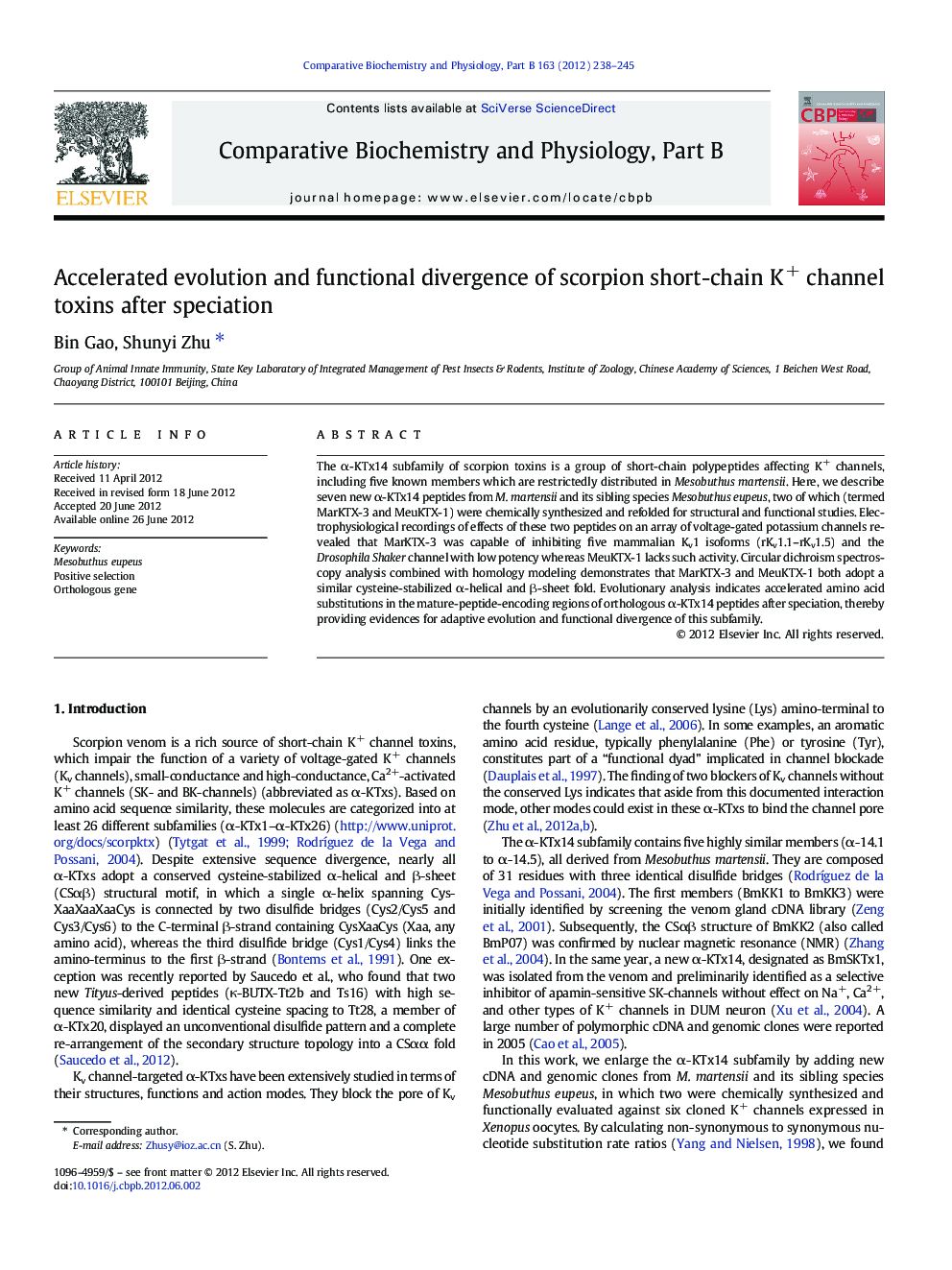| Article ID | Journal | Published Year | Pages | File Type |
|---|---|---|---|---|
| 1975466 | Comparative Biochemistry and Physiology Part B: Biochemistry and Molecular Biology | 2012 | 8 Pages |
Abstract
The α-KTx14 subfamily of scorpion toxins is a group of short-chain polypeptides affecting K+ channels, including five known members which are restrictedly distributed in Mesobuthus martensii. Here, we describe seven new α-KTx14 peptides from M. martensii and its sibling species Mesobuthus eupeus, two of which (termed MarKTX-3 and MeuKTX-1) were chemically synthesized and refolded for structural and functional studies. Electrophysiological recordings of effects of these two peptides on an array of voltage-gated potassium channels revealed that MarKTX-3 was capable of inhibiting five mammalian Kv1 isoforms (rKv1.1-rKv1.5) and the Drosophila Shaker channel with low potency whereas MeuKTX-1 lacks such activity. Circular dichroism spectroscopy analysis combined with homology modeling demonstrates that MarKTX-3 and MeuKTX-1 both adopt a similar cysteine-stabilized α-helical and β-sheet fold. Evolutionary analysis indicates accelerated amino acid substitutions in the mature-peptide-encoding regions of orthologous α-KTx14 peptides after speciation, thereby providing evidences for adaptive evolution and functional divergence of this subfamily.
Related Topics
Life Sciences
Biochemistry, Genetics and Molecular Biology
Biochemistry
Authors
Bin Gao, Shunyi Zhu,
